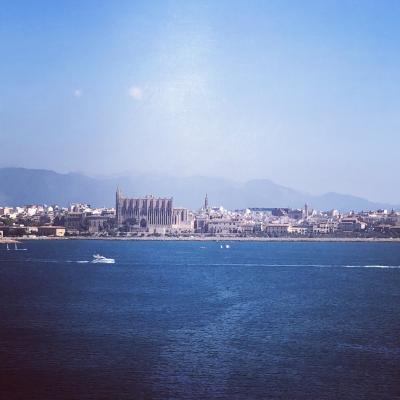How does the Cathedral of Palma reflect the cultural changes in Mallorca throughout history?
Similar Topics
cathedral of palma
la seu
mallorca history
gothic architecture
antoni gaudí
modernisme elements
stained glass windows
cultural transformations
The Cathedral of Palma, also known as La Seu, stands as a remarkable testament to the evolving cultural and historical landscape of Mallorca. Its construction began in the early 13th century, shortly after the Christian conquest of the island, reflecting the shift from Islamic to Christian rule. This transition is embodied in the cathedral’s Gothic architecture, which was designed to assert Christian dominance and serve as a symbol of the burgeoning medieval European influence on the island. The imposing structure, with its towering spires and intricate stonework, showcases the religious and political aspirations of the time.
Over the centuries, La Seu has been a canvas for various artistic and cultural influences that mirror Mallorca’s dynamic history. In the early 20th century, the renowned architect Antoni Gaudí was invited to restore parts of the cathedral, infusing it with Modernisme elements that brought new life and creativity to the historic building. This blend of Gothic tradition with modern innovation reflects a period when Mallorca was opening up to broader European artistic currents while still honoring its medieval heritage. Additionally, the cathedral’s stained glass windows and chapels have evolved to incorporate contemporary designs, illustrating the island’s ongoing cultural dialogue between past and present.
The Cathedral of Palma also encapsulates the social and economic changes on the island, as it has been a focal point for religious ceremonies, local gatherings, and tourism. Its prominent location overlooking the Bay of Palma underscores the importance of Mallorca as a Mediterranean hub throughout history, linking trade, culture, and spirituality. Today, the cathedral not only serves as a place of worship but also as a historical monument attracting visitors from around the world, symbolizing Mallorca’s journey from a strategic medieval stronghold to a vibrant, cosmopolitan destination. Through its architecture and continuous adaptations, La Seu vividly reflects the cultural transformations that have shaped the island over the centuries.
Over the centuries, La Seu has been a canvas for various artistic and cultural influences that mirror Mallorca’s dynamic history. In the early 20th century, the renowned architect Antoni Gaudí was invited to restore parts of the cathedral, infusing it with Modernisme elements that brought new life and creativity to the historic building. This blend of Gothic tradition with modern innovation reflects a period when Mallorca was opening up to broader European artistic currents while still honoring its medieval heritage. Additionally, the cathedral’s stained glass windows and chapels have evolved to incorporate contemporary designs, illustrating the island’s ongoing cultural dialogue between past and present.
The Cathedral of Palma also encapsulates the social and economic changes on the island, as it has been a focal point for religious ceremonies, local gatherings, and tourism. Its prominent location overlooking the Bay of Palma underscores the importance of Mallorca as a Mediterranean hub throughout history, linking trade, culture, and spirituality. Today, the cathedral not only serves as a place of worship but also as a historical monument attracting visitors from around the world, symbolizing Mallorca’s journey from a strategic medieval stronghold to a vibrant, cosmopolitan destination. Through its architecture and continuous adaptations, La Seu vividly reflects the cultural transformations that have shaped the island over the centuries.
🧩 Related Questions
Related Question
What are the key festivals in Mallorca that celebrate sheep farming and pastoral life?
Related Question
What are some key themes commonly found in medieval Catalan literature?
Related Question
What types of natural materials are commonly used for souvenirs at Nature Graphics in Alcudia?

